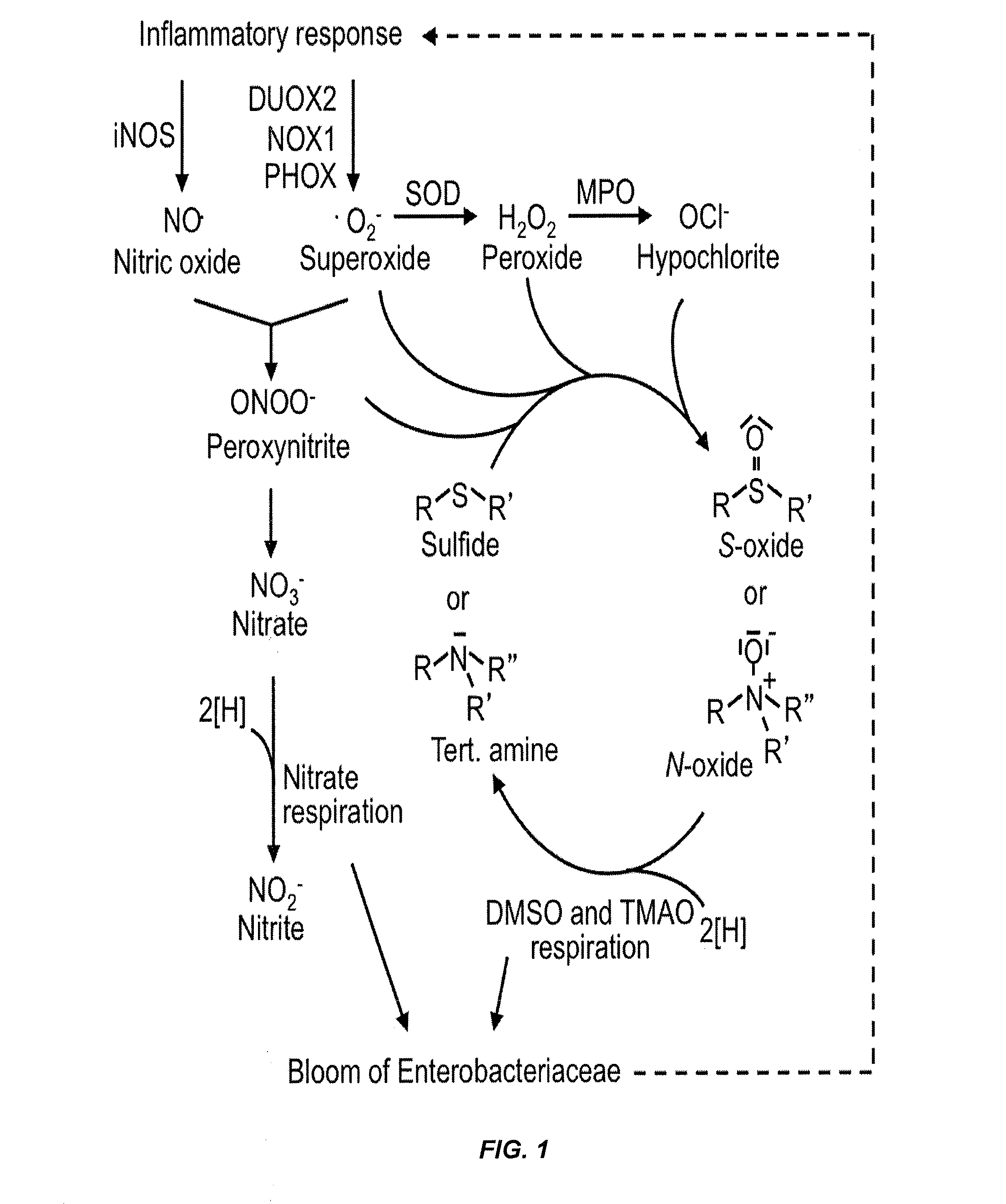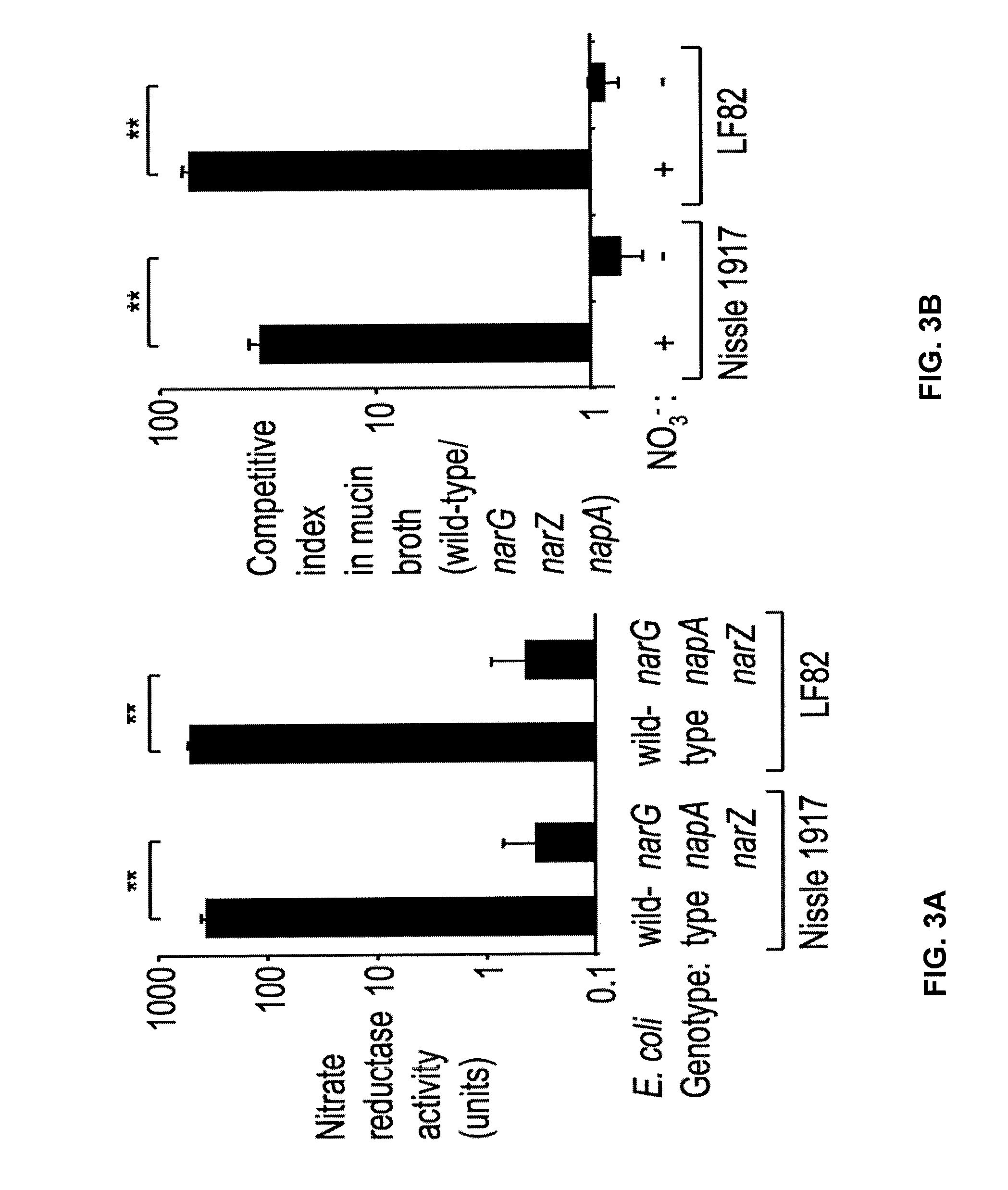Tungstate treatment of the dysbiosis associated with gastrointestinal inflammation
a dysbiosis and dysbiosis technology, applied in the field of tungstate treatment of the dysbiosis associated with gastrointestinal inflammation, can solve the problems of unfavorable phylum-level changes, inability to effectively combat enterobacteriaceae, so as to reduce the abundance of enterobacteriaceae in the subject's gastrointestinal tract, reduce the abundance of enterobacteriaceae in the subj
- Summary
- Abstract
- Description
- Claims
- Application Information
AI Technical Summary
Benefits of technology
Problems solved by technology
Method used
Image
Examples
example 1
Anaerobic Respiration Controls Growth of Enterobacteriaceae in the Large Bowel During Host Inflammatory Response
[0105]This example shows that terminal respiratory electron acceptors are generated as a byproduct of the host inflammatory response and increase the fitness of Enterobacteriaceae to efficiently outcompete obligate anaerobic bacteria, a process that can further exacerbate intestinal mucosa.
[0106]It has been shown that (i) reactive oxygen and nitrogen species are produced during intestinal inflammation generate respiratory electron acceptors, and (ii) electron acceptors are available in the inflamed gut to support growth of E. coli by anaerobic respiration, which is more efficient for energy production than fermentation. This example shows that anaerobic respiration is one of the fundamental principles that governs the phylum-level changes in the composition of gut-associated microbial communities during inflammation.
Introduction
[0107]E. coli possesses three nitrate reducta...
example 2
Tungstate Treatment of the Dysbiosis Associated with IBD
[0214]The human large intestine is host to a complex microbial community dominated by obligate anaerobic bacteria belonging to the phyla Bacteroidetes and Firmicutes. On the phylum level, this microbiota composition is highly conserved, not just during the life span of an individual but also between different mammalian species. However, conditions of intestinal inflammation can lead to a microbial imbalance (dysbiosis) characterized by a marked decrease in the representation of obligate anaerobic bacteria and an increased relative abundance of facultative anaerobic bacteria, such as Enterobacteriaceae (1). Inflammation-associated dysbiosis is thought to exacerbate disease symptoms and duration (2).
[0215]Recent work has demonstrated that with the onset of inflammatory host responses, the nutritional environment in the anaerobic gut lumen substantially changes (3,4). Host-generated reactive oxygen and nitrogen species aimed at in...
PUM
 Login to View More
Login to View More Abstract
Description
Claims
Application Information
 Login to View More
Login to View More - R&D
- Intellectual Property
- Life Sciences
- Materials
- Tech Scout
- Unparalleled Data Quality
- Higher Quality Content
- 60% Fewer Hallucinations
Browse by: Latest US Patents, China's latest patents, Technical Efficacy Thesaurus, Application Domain, Technology Topic, Popular Technical Reports.
© 2025 PatSnap. All rights reserved.Legal|Privacy policy|Modern Slavery Act Transparency Statement|Sitemap|About US| Contact US: help@patsnap.com



